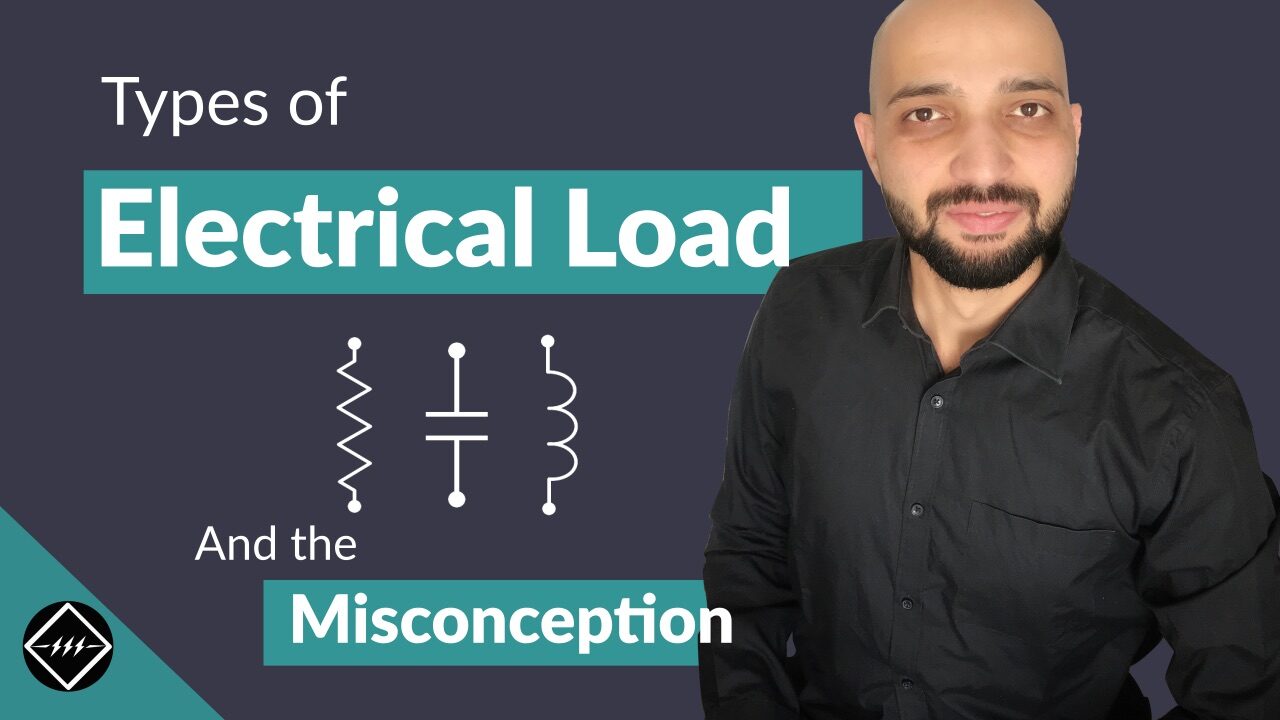What is Permittivity ? Easiest Explanation
What is Permittivity ? Easiest Explanation https://www.theelectricalguy.in/wp-content/uploads/2020/12/Thumbnail-1024x576.jpg 1024 576 Gaurav J Gaurav J https://secure.gravatar.com/avatar/87a2d2e0182faacb2e003da0504ad293?s=96&d=mm&r=gIn this tutorial, we will learn about what is permittivity, what are the types of permittivity and what are the applications of the same (related to electrical engineering). So, let’s start.
What is permittivity ?
It is a property of every material or the medium. Now, you may ask, what is medium? So, let’s understand the medium first.
Let’s say, I am speaking in a microphone. My voice is getting transferred in the microphone via air. So, in this case, the medium between me and the microphone is AIR. If I take out all the air from this room, then the medium becomes vaccum. Or, if I fill this room with SF6 GAS, then the medium becomes SF6. So, that is medium.
So, permittivity is a property of such mediums. It also applies to the materials. This is first thing.
By definition, Permittivity is the property of every material or the medium, which measures the opposition offered against the formation of an electric field.
Okay, that’s the definition, but what is happening inside? Let’s understand that.
Permittivity Explained
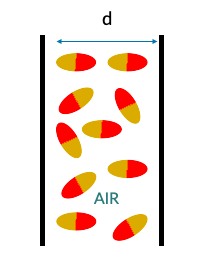
Let’s consider we have two plates, separated by distance “d” as shown above. Between, these two plates there is a medium, which is AIR.
Now, of course, in between these plates there are molecules present. These molecules tends to form an electric dipole moments. What is electric dipole? It is a pair of equal & opposite charges. So for example, one molecule will have positive charge to one end and negative to the other, separated by a distance, as shown below. That is what we call electric dipole.
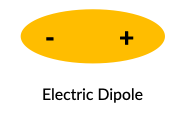
As shown below, normally, these moclecules are aligned randomly in the plates. The magic starts when we apply an external electric filed to these plates. The moment we apply external electric field, these molecules aling themselves in a better way. And because of that, their dipole moment produces it’s own electric field.
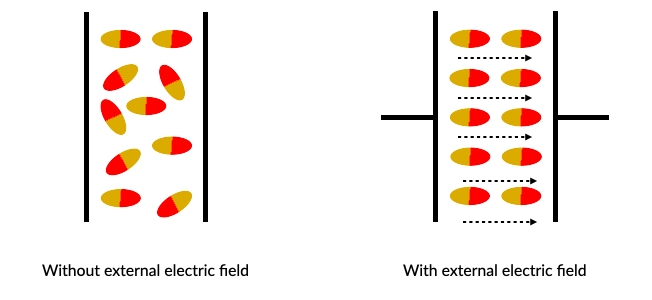
And this electric field resists the external electric field which we have applied. In other words, the electric field created by the dipole moments acts in the opposite direction to the external electric field.
So, it becomes like the same pole of two magnets. They keep repelling each other.
This process in which the molecules aling themselves when an external electric field is applied is what we call as “polarizability”.
The better the molecules align themselves or better they polarise the more they resist the external electric field.
And that is what we call as permittivity. It measures the opposition offered by a medium or material to an external electric field. If the permittivity of a medium is higher, that means, the molecules of that medium polarises better and hence they offer more resistance to external electric field. And similarly, if the permittivity of a medium is low, that means, the molecules poorly polarizes and hence, they offer low resistance to external electric field.
Is permittivity constant ?
Now, most of the people thinks permittivity is constant. Well, that is not true always.
It is not a constant. It can vary with
- Type of medium
- Frequency of the field applied
- Humidity
- Temperature
- Strength of the electric field, etc
Permittivity is denoted by a Greek letter epsilon (ϵ) and unit is farad per meter (F/m).
Types of Permittivity
There are two types of permittivity. One is absolute permittivity. we can also refer permittivity as Absolute permittivity.
The second one is Relative permittivity. Denoted by ϵr. It is nothing but the ratio of absolute permittivity and permittivity of Vacuum or permittivity of free space. Generally, vacuum’s permittivity we refer as constant. And we denote it by ϵ0. Vacuum has least possible value of permittivity. And hence, we consider it as the base.
Please note, in engineering application, permittivity is generally expressed as relative permittivity rather than absolute permittivity. And relative permittivity is also called as “Dielectric constant”.
Application
Permittivity plays an important role in determining the capacitance of a capacitor. Capacitance of a parallel plate capacitor is given by
![]()
Where,
A is the area of one plate
d is the distance between two plates
Epsilon: is the permittivity of the medium between the two plates
Now, as you can see, permittivity can clearly affect the capacitance of a capacitor.
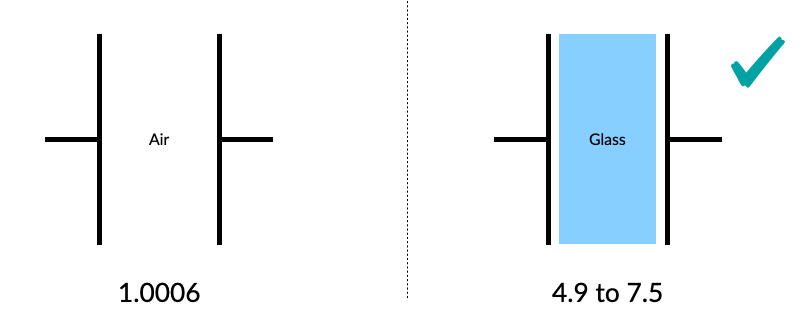
In the capacitor shown above (left side), the dielectric used is air. Who’s relative permittivity is little greater than 1 (1.0006).
And in the second example (right side), let’s replace the air by glass. Who’s permittivity is approx. 4.9 to 7.5. So, definitely, the capacitance of a capacitor with glass as dielectric will be more than the air.
Vaccum & air has least value of permittivity. Then the materials like, Polypropylene, transformer oil, glass, wood, mica, porcelain, distilled water, etc has higher permittivity.
So, material with greater permittivity will give more capacitance and material with lower permittivity will offer less capacitance. And hence, permittivity plays a very important role while deciding the value of capacitance.
Now, this is just one application we have seen. There are others as well.
That’s all for this tutorial. If you like the tutorial, do share it with your friends and subscribe to free email updates.
Gaurav J
Electrical Engineer. Content Creator. Currently working with a High & Extra High Voltage Switchgear Industry.
All stories by: Gaurav J


